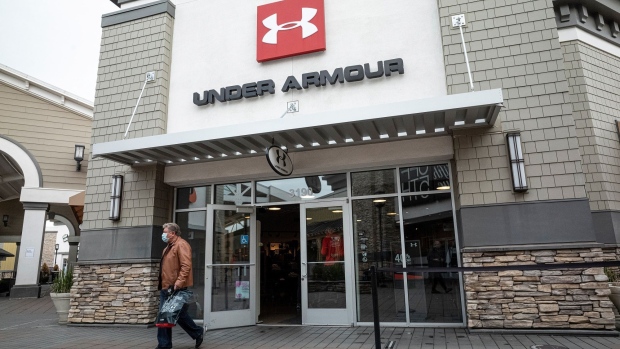Feb 8, 2023
Under Armour Says More Discounting in Store for Sports Apparel
, Bloomberg News

(Bloomberg) -- Under Armour Inc. shares slipped after executives said discounting will continue for a prolonged period as the athletic brand works through excess merchandise.
Inventory buildup has weighed down the sports-apparel industry due to unpredictable demand and long freight times. That’s led to heavy promotional activity to get goods off store shelves. Under Armour’s inventory rose 50% to $1.22 billion for the third quarter ended Dec. 31, compared with the prior year.
Executives said on an earnings call Wednesday that “bloated” inventory is a problem across the category.
“That is something that all of the retailers are going to need to work through in the coming quarters,” Under Armour Chief Financial Officer Dave Bergman said. “That’s probably going to take a little bit longer than what we would have expected maybe 90 days back.”
The overhang is putting pressure on Under Armour’s gross margins, which are now expected to be at the low end of the company’s prior outlook for the fiscal year.
The shares fell as much as 5.5%, extending a four-day losing streak.
Citigroup analyst Paul Lejuez called the quarter “disappointing” in a research note. In addition to weaker-than-expected gross margins, he said North America revenue also fell short of his estimates.
Revenue in North America was down 2% for the quarter. International sales rose 14%, led by growth in Latin America. It fell 9% in the Asia-Pacific region.
The retailer now sees full-year earnings in a range of 52 cents to 56 cents a share, excluding some items, up from a prior forecast of 44 cents to 48 cents. The company still expects revenue to grow at a mid-single-digit percentage, excluding currency impact, according to a statement.
Investors hope that incoming Chief Executive Officer Stephanie Linnartz will help recapture growth that the Baltimore-based company saw in its earlier years. She joins the company later this month after a long career at Marriott. Her predecessor had worked to revamp operations and cut costs while boosting the brand’s direct-to-consumer business.
--With assistance from Kevin Simauchi.
©2023 Bloomberg L.P.






